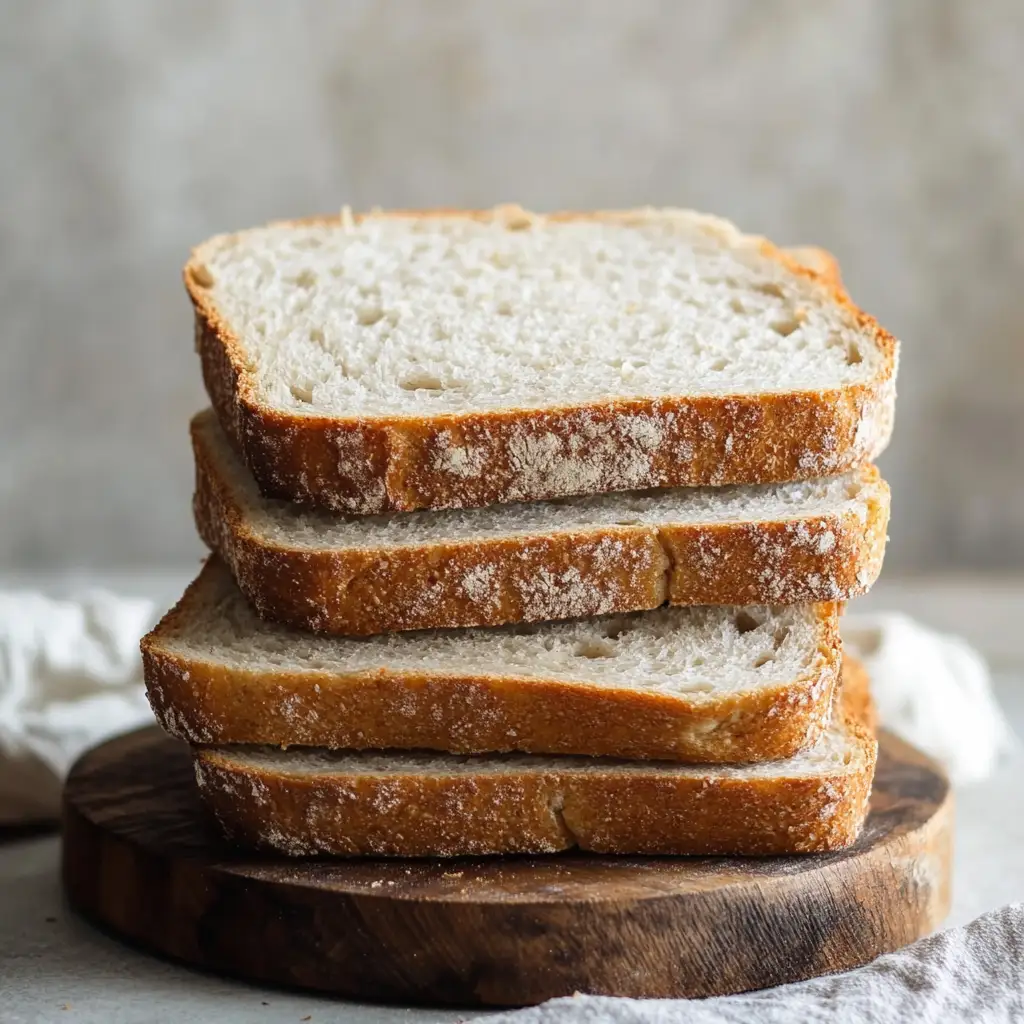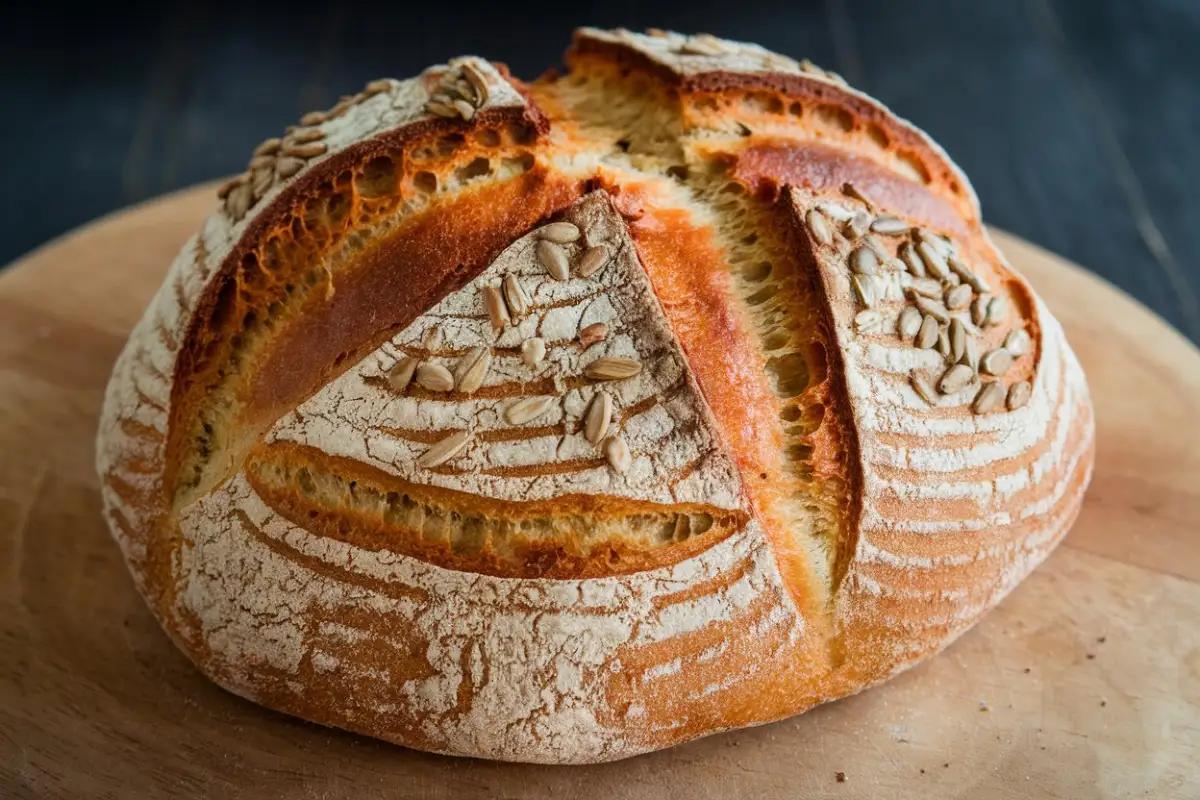A vegan bread recipe is the perfect way to enjoy freshly baked, homemade bread without any animal products. There’s something magical about the smell of warm bread wafting through your kitchen, isn’t there? Imagine that bread being 100% vegan – no dairy, no eggs, just pure plant-based goodness. Whether you’re a seasoned baker or a complete newbie, learning how to make a vegan bread recipe at home is both rewarding and satisfying.
Additionally, baking your own vegan bread recipe allows you to experiment with healthier and more sustainable ingredients, making it a win-win for both you and the planet. In this guide, we’ll walk you through every step of the process, from essential ingredients and equipment to troubleshooting common baking issues. We’ll also explore creative variations of the classic vegan bread recipe to keep your baking adventures exciting.
Homemade vegan bread recipes offer numerous benefits, including better control over ingredients, cost savings, and a reduced environmental impact. Unlike store-bought bread, which may contain preservatives or hidden animal-derived ingredients, a vegan bread recipe made from scratch ensures freshness and quality.
So, if you’re ready to bake the ultimate vegan bread recipe, roll up those sleeves, gather your ingredients, and let’s get started!
What Makes Bread Vegan?
At its core, bread only needs four basic ingredients: flour, water, yeast, and salt. So, you might be wondering, what’s the catch with vegan bread? Well, many traditional bread recipes sneak in non-vegan ingredients like butter, milk, honey, or even eggs to enhance flavor and texture. Vegan bread, on the other hand, skips all that and relies on plant-based substitutions or simply sticks to the basics.
The Growing Popularity of Vegan Bread
Vegan bread isn’t just for plant-based eaters anymore. In fact, with more people seeking healthier and environmentally friendly options, it has quickly found its way onto mainstream grocery shelves and bakery menus. Moreover, its versatility allows it to suit nearly any diet – whether gluten-free, low-carb, or whole grain – making it a popular choice for everyone. Additionally, the growing awareness of sustainability and health benefits continues to drive its widespread appeal.
Benefits of Making Vegan Bread at Home

Why bother baking bread at home when you can buy it at the store? Oh, let me count the reasons!
Health Benefits
When you bake vegan bread yourself, you know exactly what’s going into it – no weird preservatives, hidden sugars, or unpronounceable chemicals. Plus, you can tweak the recipe to make it as wholesome as you want, adding seeds, whole grains, or nutrient-rich flours.
Cost Efficiency
Let’s be real: buying high-quality vegan bread from the store can sometimes burn a hole in your pocket. But making it at home? A fraction of the cost! A bag of flour and some basic ingredients will give you loaves upon loaves, saving you money in the long run.
Environmental Impact
Here’s a cool thought: by baking vegan bread, you’re doing your bit for the planet. Fewer packaged goods mean less plastic waste, and plant-based baking has a significantly smaller carbon footprint compared to traditional bread-making methods. 🌱
Essential Ingredients for Vegan Bread
Now, let’s get to the heart of the matter: what do you actually need to bake vegan bread?
Common Vegan Bread Ingredients
The basics include flour, water, yeast, and salt. But if you want to add some flair, think olive oil for moisture, maple syrup for sweetness, or seeds for crunch. Trust me, these little tweaks take your bread from “meh” to “wow.”
Substitutions for Non-Vegan Ingredients
Are you wondering how to replace eggs or milk in traditional bread recipes? Fortunately, there are plenty of easy options. For milk, plant-based alternatives such as almond, soy, or oat milk work like a charm. Similarly, when it comes to eggs, a flaxseed or chia seed gel (1 tablespoon of seeds mixed with 3 tablespoons of water) does the trick perfectly. Additionally, these substitutions not only maintain the texture and flavor of your bread but also keep it 100% vegan-friendly.
Tips for Choosing High-Quality Ingredients
Here’s a pro tip: always go for unbleached flour and organic ingredients if you can. Not only do they taste better, but they’re also better for your health. And when it comes to yeast, fresh or active dry yeast will give you the best results.
Tools and Equipment Needed for Vegan Bread Baking
Before you get your hands messy, let’s talk gear. Don’t worry – you don’t need a fancy kitchen setup.
Must-Have Baking Tools
- Mixing Bowls: A couple of large bowls for mixing and proofing.
- Measuring Cups and Spoons: Precision matters in baking.
- Loaf Pan: For shaping your bread perfectly.
- Kitchen Scale: Not essential, but it helps with accuracy.
Optional Tools to Enhance the Experience
- Stand Mixer: Saves time and effort when kneading dough.
- Bench Scraper: For shaping and handling dough easily.
- Dutch Oven: Gives your bread that professional, crusty finish.
Step-by-Step Process for Baking Vegan Bread
Ready to dive into the fun part? Baking vegan bread might seem intimidating at first, but with the right steps, it’s as easy as pie – or should we say, bread! Let’s break it down into simple, manageable stages.
Preparing Your Workspace
Before you even touch the ingredients, take a moment to set yourself up for success. Clear a clean, spacious surface for kneading and have all your tools within arm’s reach. Baking is like a dance – everything flows better when you’re not scrambling to find a missing tool mid-way!
Mixing and Kneading the Dough
- Step 1: In a large bowl, mix the dry ingredients: flour, yeast, and salt. If your recipe includes extras like seeds or herbs, toss them in now.
- Step 2: Add the wet ingredients – water, plant-based milk, or oil. Start mixing with a spoon or your hands until it forms a shaggy dough.
- Step 3: Knead the dough on a floured surface for about 8-10 minutes. The goal? A smooth, elastic dough that feels soft but not sticky.
H3: Proofing the Dough
This is where the magic happens. Proofing lets the yeast work its magic, creating air pockets that make your bread light and fluffy.
- Step 1: Place your dough in a lightly oiled bowl, cover it with a damp cloth, and let it rest in a warm spot.
- Step 2: Depending on your recipe, proofing can take anywhere from 1-2 hours. The dough should double in size. A good tip? Gently press it with your finger; if the dent stays, it’s ready!
Common Problems When Making Vegan Bread
Baking bread is as much science as it is art. And like any art, it comes with its own set of challenges. Let’s tackle the most common problems so you can avoid them like a pro.
Dense or Heavy Bread: Causes and Solutions
Ever sliced into your bread only to find it feels more like a brick than a loaf? This usually happens because of:
- Under-kneading: Not enough gluten development. Knead a little longer next time.
- Over-proofing: Letting the dough rise for too long can deflate it. Keep an eye on the clock!
Bread That Doesn’t Rise: How to Fix It
If your bread doesn’t rise, the yeast might be the culprit. Make sure your yeast is fresh and active by testing it in warm water before mixing. Also, check that your kitchen isn’t too cold – yeast loves warmth to do its thing.
Flavor Issues: Enhancing Taste
Sometimes vegan bread can taste a bit bland. To amp up the flavor:
- Use a touch of natural sweeteners like maple syrup or agave.
- Add spices, herbs, or garlic for a savory twist.
- Experiment with infused oils, like garlic or rosemary oil, for an extra flavor boost.
Creative Variations of Vegan Bread Recipe
Vegan bread doesn’t have to be plain. Think of your bread as a blank canvas, waiting for you to paint it with flavors and textures.
Whole Wheat Vegan Bread
Want a healthier option? Swap out half or all of your all-purpose flour with whole wheat flour. Keep in mind that whole wheat flour absorbs more water, so adjust your liquid accordingly.
Gluten-Free vegan bread recipe
Gluten-free bread? Yes, it’s possible! Use a gluten-free flour blend and a binding agent like xanthan gum to help hold things together.
Sweet Vegan Bread Options
Are you craving something sweet? If so, consider adding a dash of cinnamon, some raisins, or even a handful of chocolate chips to your dough. Not only do these additions enhance the flavor, but they also create a delightful aroma that fills your kitchen. Furthermore, sweet vegan bread pairs perfectly with your morning coffee or tea, making it an ideal start to your day.
Storing and Preserving Your vegan bread recipe
You’ve baked the perfect loaf, but how do you keep it fresh and tasty for days to come?
Best Practices for Freshness
- Store your bread in a bread box or wrap it in a clean kitchen towel to maintain its crusty exterior. Avoid plastic bags unless you like softer crusts.
- Keep it in a cool, dry place away from sunlight.
Freezing Vegan Bread for Longer Shelf Life
Baked a big batch? Freeze some! Slice the loaf first for easy toasting later. Wrap each slice in parchment paper, then store in an airtight container or freezer bag. Your future self will thank you.
Pairing Vegan Bread with Delicious Spreads and Toppings
What’s a great loaf of bread without some mouthwatering spreads and toppings? After all, the right pairings can elevate your vegan bread experience to a whole new level. So, let’s dive in and explore how you can take your homemade bread from delicious to absolutely unforgettable.
Savory Pairings
For a savory treat, try pairing your bread with:
- Hummus: A creamy and protein-packed option that comes in endless flavors.
- Avocado Spread: Mash up some avocado with a pinch of salt, pepper, and a squeeze of lemon. 🥑
- Vegan Cheese: Spreadable cashew cheese or a slice of plant-based cheddar makes for a decadent snack.
Sweet Pairings
Got a sweet tooth? Vegan bread shines with these:
- Nut Butters: Peanut, almond, or hazelnut butter are all rich and satisfying options.
- Jam or Marmalade: Classic and comforting, these add a fruity twist.
- Vegan Chocolate Spread: For an indulgent dessert-like bite, slather on some cocoa spread.
Frequently Asked Questions About vegan bread recipe
Let’s tackle some burning questions about vegan bread so you can bake with total confidence.
Can I Use All-Purpose Flour for Vegan Bread?
Absolutely! All-purpose flour is a great starting point for beginners. For more nutrition or flavor, you can experiment with whole wheat, spelt, or rye flour.
How Long Does Vegan Bread Last?
Homemade vegan bread typically lasts 3-4 days at room temperature when stored properly. If you need it to last longer, freezing is the way to go.
What Are the Best Vegan Substitutes for Eggs in Bread?
Most bread recipes don’t require eggs, but if you’re working with one that does, flaxseed or chia seed gels are excellent options. They add binding without altering the flavor.
Conclusion: Enjoying the Art of vegan bread recipe Baking
Baking vegan bread isn’t just about the end result – it’s also about the journey. From kneading the dough to savoring that first warm slice fresh from the oven, every step is a deeply rewarding process. Furthermore, it allows you to connect with your food on a personal level, making the experience even more meaningful. In addition, the act of baking can be both therapeutic and creative, transforming simple ingredients into something extraordinary.
Why choose vegan bread? Because it’s healthier, kinder to the planet, and oh-so-delicious. And with so many variations and toppings to try, you’ll never run out of ways to enjoy it.

